
Distance Learning & the Human Touch
Veteran trainer, Anke Smolders-Aidam, outlines the human and technology requirements needed for successful remote learning.
Right now, chief learning officers (CLOs) are finding themselves entirely rethinking their training programs – fast. Roles are changing. People need to acquire new skills. Companies are re-thinking the immediate future. Then there is the challenge of confinement. What does a veteran trainer think about when planning to upskill people in confinement. For her, two things are vitally important.
TOP DOWN NO LONGER
Anke Smolders-Aidam first got involved in training 15 years ago with the Dutch company Vlisco, and currently in digital training with Signify (formerly Philips Lighting). Obviously, a lot has changed in that time, notably a move from a very traditional top-down classroom setup to mixed training offerings.
The changes aren’t simply technical. They include how best to use resources, build a knowledge-sharing framework and the very human aspects of both training and learning. This gives Anke a good perspective when it comes to the overall picture of setting up online or distance learning solutions.
“I like to do virtual training because there are so many opportunities,” she explains. “And I am not only talking about corporate but also public education, eg. access to education in less accessible parts of the world, or for people that might not receive a travel visa.”
FROM PUSH TO PULL
The major shift that she has seen is the transformation from a push to a pull environment. Her early experiences involved setting up training programs and then pushing them towards people that might need them. That has changed. “A year or two ago, Signify went from a learning management system (LMS) to a learning experience platform (LXP). So from a classic training calendar – where we determine what’s good for the market – to a different vision. People know what they need, they just need to be able to find it at the right time. That’s more of a ‘pull’ perspective. We really make people think about how they get their knowledge,” she explains. “We call this change, ‘everyone’s a student, but everyone’s a teacher’.”
FROM FORMAL TO SOCIAL LEARNING
Ideally, the current mix for Anke is what she calls “the 70-20-10 idea”: people get 70% of their knowledge from doing the job, 20% is about working together. 10% is actually knowledge acquired through classroom-based training.”
In a training session itself, what are the most important offline or online aspects that make it go well? Anke points to three important elements.
The right mix: the right content for the right audience at the right time
The right context: are you crammed into a room or are you in a good, safe learning environment where you can concentrate?
The right trainer: “train the trainer” concepts often only focus on face-to-face environments. People should be able to stand in front of the class with confidence and dare to innovate, both in face-to-face and virtual environments.
This article first appeared on Barco.com
 Trainer and educator, Anke Smolders-Aidam
Trainer and educator, Anke Smolders-Aidam
FACE-TO-FACE, EVEN ONLINE
Training and didactics are a skill. But sometimes this role is just given to team members. Yet they have to feel comfortable. “People sometimes prefer a classroom environment, especially in transition from face-to-face to virtual learning,” says Anke. “A virtual environment is no different from a live one: if people don’t feel safe, they start to have a different behaviour, they will play safe. So creating a space for people to experiment is very good.”
In this respect, solutions such as weConnect provide a classroom environment, as eye contact and engagement are built into the system and the experience it delivers to both students and teachers are very close to a face-to-face experience.
CHOOSING THE RIGHT ONLINE PLATFORM
When it comes to choosing a platform for distance learning, Anke has clear advice. “What happens in practice is that people are guided by what is available in the market and less thought goes into ‘what do we need and what fits in with that?’ Because it’s new, people can buy something that looks nice, but that they don’t need at all.”
So what questions should we ask when choosing what solution to work with? “You have to think about connecting people to people,” says Anke. “The motivation of a trainer or tutor is often in what they get back from their audience, they need that feedback. Yet that element is lost in most applications. A lot of trainers tell me they don’t believe in their past digital experiences.”
VISUAL & PHYSICAL FEEDBACK
Visual and actual physical feedback is a fundamental aspect that builds connections.
Eye contact means engagement.
In the quest for engagement, one thing is primordial. “Eye contact is important to know whether the content is really getting through,” notes Anke. “Even if people see content and hear a voice but there is no human connector, their attention quickly drifts away. We are easily distracted nowadays! The tutor is competing with Facebook, Instagram and LinkedIn.”
There is a big difference between learning at a university and learning in a corporate, business school or medical environment. “Things move faster. In education, a teaching method lasts for several years; with us it can change again after two months, because something happens in the market or updates happen, or budgets are adjusted. It’s more erratic. It seems to be more stable at universities.
As recent events have shown, the ability to adapt to situations is now vital in some sectors. Distance learning can enable this to happen in a more productive manner that also provides the flexibility to adapt to changing circumstances.




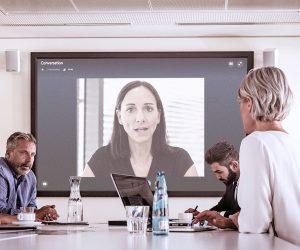
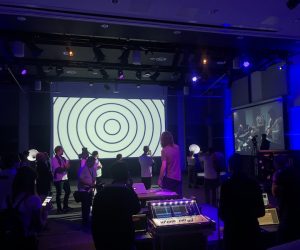


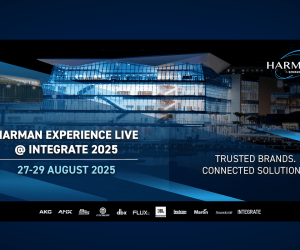

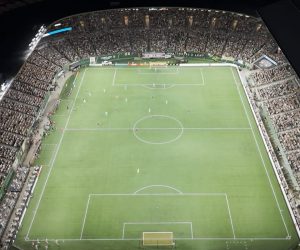

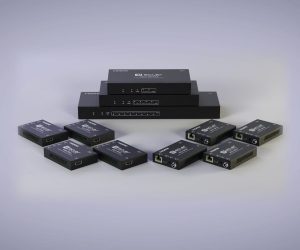


RESPONSES